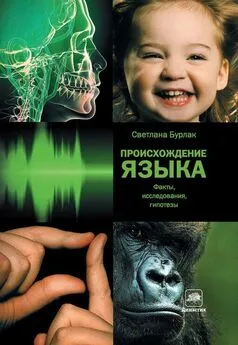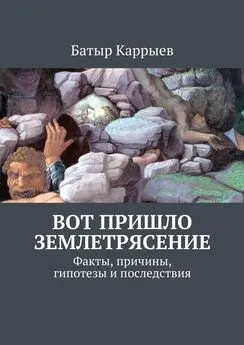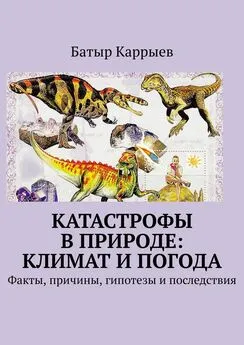Светлана Бурлак - Происхождение языка: Факты, исследования, гипотезы
- Название:Происхождение языка: Факты, исследования, гипотезы
- Автор:
- Жанр:
- Издательство:Астрель, CORPUS
- Год:2011
- Город:Москва
- ISBN:978-5-271-31205-2
- Рейтинг:
- Избранное:Добавить в избранное
-
Отзывы:
-
Ваша оценка:
Светлана Бурлак - Происхождение языка: Факты, исследования, гипотезы краткое содержание
Происхождение языка: Факты, исследования, гипотезы - читать онлайн бесплатно ознакомительный отрывок
Интервал:
Закладка:
Mellars P.A. Technological changes across the Middle — Upper Palaeolithic transition: economic, social and cognitive perspectives // The human revolution: Behavioural and biological perspectives on the origin of modern humans / Ed. by Mellars P.A., Stringer C.B. — Princeton (N.J.): Princeton Univ. Press, 1989. — P. 338–365.
Menzel E.W. Communications of object-locations in a group of young chimpanzees // The great apes: Perspectives on human evolution / Ed. by Hamburg D.A., McCown E.R. — Menlo Park, California: Benjamin/Cummings, 1979. — Vol. 5. — P. 359–371.
Mercader J., Barton H., Gillespie J., Harris J., Kuhn S., Tyler R., Boesch Ch. 4,300 -Year-old chimpanzee sites and the origins of percussive stone technology // Proceedings of the National Academy of Science, USA. — 2007. — Vol. 104. — No. 9. — P. 3043–3048.
Michelsen A., Andersen B.B., Storm J., Kirchner W.H., Lindauer M. How honey-bees perceive communication dances, studied by means of a mechanical model // Behavioral ecology and sociobiology. — 1992. — Vol. 30. — P. 143–150.
Miles H.L. Apes and language: The search for communicative competence // Language in Primates: Perspectives and implications / Ed. by De Luce J., Wilder H.T. — N.Y.: Springer-Verlag, 1983. — P. 43–61.
Miles H.L.W. The cognitive foundations for reference in a signing orangutan // «Language» and intelligence in monkeys and apes: Comparative developmental perspectives / Ed. by S.T. Parker & K.R. Gibson. — Cambridge (England): Cambridge University Press, 1990. — P. 511–539.
Miller G.F. The mating mind: How sexual choice shaped the evolution of human nature. — N.Y.: Doubleday/Heinemann, 2000. — 503 p.
Mitani J.C. Brandt K.L. Social factors influence the acoustic variability in the long-distance calls of male chimpanzees // Ethology. — 1994. — V. 96. — P. 233–252.
Mithen S. After the ice: A global human history 20,000—5000 BC. — London: Phoenix, 2004. — 622 p.
Morford J.P. Why does exposure to language matter? // The evolution of language out of pre-language / Ed. by Givón T., Malle B.F. — Amsterdam; Philadelphia: John Benjamins, 2002. — P. 329–341.
Morwood M.J., Soejono R.P., Roberts R.G., Sutikna T., Turney C.S.M., Westaway K.E., Rink W.J., Zhao J.-X., van den Bergh G.D., Due R.A., Hobbs D.R., Moore M.W., Bird M.I., Fifield L.K. Archaeology and age of a new hominin from Flores in eastern Indonesia // Nature. — 2004. — Vol. 431. — P. 1087–1091.
Morwood M.J., Brown P., Jatmiko, Sutikna T., Saptomo E.W., Westaway K.E., Due R.A., Roberts R.G., Maeda T., Wasisto S., Djubiantono T. Further evidence for small-bodied hominins from the Late Pleistocene of Flores, Indonesia // Nature. — 2005. — Vol. 437. — P. 1012–1017.
Murphy R.A., Mondragón E., Murphy V.A. Rule learning by rats // Science. — 2008. — Vol. 319. — No. 5871. — P. 1849–1851.
Neisser A. The other side of silence: Sign language and the deaf community in America. — New York: Knopf, 1983. — 301 p.
Newmeyer F.J. What can the field of linguistics tell us about the origins of language // Language evolution / Ed. by Christiansen M.H., Kirby S. — Oxford: Oxford Univ. Press, 2003. — P. 58–76.
Nishimura T., Mikami A., Suzuki J., Matsuzawa T. Descent of the larynx in chimpanzee infants // Proceedings of the National Academy of Science, USA. — 2003. — Vol. 100. — No. 12. — P. 6930–6933.
Noble W., Davidson I. Human evolution, language and mind: A psychological and archaeological inquiry. — Cambridge: Cambridge Univ. Press, 1996. — XIII, 272 p.
Nowak M.A., Komarova N.L. Towards an evolutionary theory of language // Trends in cognitive sciences. — 2001. — Vol. 5. — Issue 7. — P. 288–295.
Nowak M.A., Plotkin J.B., Krakauer D.C. The evolutionary language game // Journal of theoretical biology. — 1999. — Vol. 200. — Issue 2. — P. 147–162.
Objects. Towards a theory of grammatical relations / Ed. by F. Plank. — London; New York: Academic Press, 1984. — X, 302 p.
Ovchinnikov I.V., Götherström A., Romanova G.P., Kharitonov V.M., Lidén K., Goodwin W. Molecular analysis of Neanderthal DNA from the northern Caucasus // Nature. Vol. — 2000. — Vol. 404. — P. 490–493.
Ouattara K., Lemasson A., Zuberbühler K. Campbell’s monkeys concatenate vocalizations into context-specific call sequences // Proceedings of the National Academy of Science, USA. — 2009a. — Vol. 106. — No. 51. — P. 22026–22031.
Ouattara K., Lemasson A., Zuberbühler K. Campbell’s monkeys use affixation to alter call meaning // Public Library of Science ONE — 2009b. — Vol. 4. — Issue 11. — e7808. — Doi:10.1371/journal.pone.0007808.
Owren M.J. Acoustic classification of alarm calls by vervet monkeys (Cercopithecus aethiops) and humans (Homo sapiens): II. Synthetic calls. // Journal of Comparative Psychology. — 1990. — Vol. 104. — Issue 1. — P. 29–40.
Patterson F.G. Innovative uses of language by a gorilla: A case study // Children’s language. Vol. 2 / Ed. by Nelson K.E. — N.Y.: Gardner Press, 1980. — Vol. 2. — P. 497–561.
Patterson F. The mind of the gorilla: Conversation and conservation // Primates: The road to self-sustaining populations / Ed. by Benirschke K. — N.Y.: Springer, 1986. — P. 933–947.
Pepperberg I.M. The Alex studies: Cognitive and communicative abilities of grey parrots. — Cambridge, MA; London, UK: Harvard Univ. Press, 1999/2002. — 434 p.
Pepperberg I.M., Gordon J.D. Number comprehension by a grey parrot (Psittacus erithacus), including a zero-like concept // Journal of comparative psychology. — 2005. — Vol. 119. — No. 2. — P. 197–209.
Peretz I., Gagnon L., Bouchard B. Music and emotion: Perceptual determinants, immediacy, and isolation after brain damage // Cognition. — 1998. — Vol. 68. — Issue 2. — P. 111–141.
Pereira M.E., Macedonia, J.M. Ringtailed lemur antipredator calls denote predator class, not response urgency // Animal Behaviour. — 1991. — Vol.41. — P. 543–544.
Perruchet P., Rey A. Does the mastery of center-embedded linguistic structures distinguish humans from nonhuman primates? // Psychonomic bulletin and review. — 2005. — Vol. 12. — No. 2. — P. 307–313.
Piatelli-Palmarini M. Evolution, selection and cognition: From «learning» to parameter setting in biology and in the study of language // Cognition. — 1989. — Vol. 31. — Issue 1. — P. 1–44.
Pika S., Mitani J.С. Referential gestural communication in wild chimpanzees (Pan troglodytes) // Current Biology. — 2006. — Vol. 16. — No. 6. — P. 191–192.
Pinker S. Language as an adaptation to the cognitive niche // Language evolution / Ed. by Christiansen M.H., Kirby S. — Oxford: Oxford Univ. Press, 2003. — P. 16–37.
Pinker S., Jackendoff R. The faculty of language: What’s special about it? //Cognition. — 2005. — Vol. 95. — No. 2. — P. 201–236.
Poeppel D. Pure word deafness and the bilateral processing of the speech code // Cognitive Science. — 2001. — Vol. 21. — Issue 5. — P. 679–693.
Pointing: Where Language, Culture, and Cognition Meet / Ed. by Kita S. — Mahwah, N.J.: Lawrence Erlbaum, 2003. — 352 p.
Poizner H., Klima E.S., Bellugi U. What the hands reveal about the brain. — Cambridge, MA: MIT Press, 1990. — 256 p. Pollard K.S., Salama S.R., Lambert N., Lambot M.-A., Coppens S., Pedersen J.S., Katzman S., King B., Onodera C., Siepel A., Kern A.D., Dehay C., Igel H., Ares M. (Jr), Vanderhaeghen P., Haussler D. An RNA gene expressed during cortical development evolved rapidly in humans // Nature. — 2006. — Vol. 443. — P. 167–172.
Pollick A.S., de Waal F.B.M. Ape gestures and language evolution // Proceedings of the National Academy of Sciences, USA. — 2007. — Vol. 104. — No. 19. — P. 8184–8189.
Poole J.H., Tyack P.L., Stoeger-Horwath A.S., Watwood S. Animal behaviour: Elephants are capable of vocal learning // Nature. — 2005. — Vol. 434. — P. 455–456.
Promislow D.E.L., Smith E.A., Pearse L. Adult fitness consequences of sexual selection in Drosophila melanogaster // Proceedings of the National Academy of Science, USA. — 1998. — Vol. 95. — Issue 18. — P. 10687–10692.
Pruetz J.D. Evidence of cave use by savanna chimpanzees (Pan troglodytes verus) at Fongoli, Senegal: implications for thermoregulatory behavior // Primates. — 2007. — Vol. 48. — № 4. — P. 316–319.
Pruetz J.D., Bertolani P. Savanna chimpanzees, Pan troglodytes verus, hunt with tools // Current Biology. — 2007. — Vol. 17. — Issue 5. — P. 412–417.
Quine W. V. O. Word and object. — Cambridge, MA: MIT Press, 1960. — 294 p.
Rauschecker J.P., Korte M. Auditory compensation for early blindness in cat cerebral cortex // Journal of Neuroscience. — 1993. — Vol. 13. — P. 4538–4548.
Read D.W. Working Memory: A ognitive limit to non-human primate recursive thinking prior to hominid evolution // Evolutionary Psychology. — 2008. — V. 6. — P. 676–714.
Reeve H.K., Hölldobler B. The emergence of a superorganism through intergroup competition // Proceedings of the National Academy of Science, USA. — 2007. — Vol. 104. — No. 23. — P. 9736–9740.
Remez R.E., Pardo J.S., Piorkowski R.L., Rubin P.E. On the bistability of sine wave analogues of speech // Psychological Science. — 2001. — Vol. 12. — No. 1. — P. 24–29.
Rendall D., Rodman P.S., Emond R.E. Vocal recognition of individuals and kin in free ranging rhesus monkeys // Animal behaviour. — 1996. — Vol. 51. — Issue 5. — P. 1007–1015.
Rendall D., Seyfarth R.M., Cheney D.L., Owren M.J. The meaning and function of grunt variants in baboons // Animal Behaviour. — 1999. — Vol. 57. — Issue 3. — P. 583–592.
Rizzolatti G., Arbib M.A. Language within our grasp // Trends in neurosciences. — 1998. — Vol. 21. — Issue 5. — P. 188–194.
Roberts M., Onnis L., Chater N. Acquisition and evolution of quasi-regular languages: Tw o puzzles for the price of one // Language origins: Perspectives on evolution / Ed. by Tallerman M. — Oxford: Oxford Univ. Press, 2005. — P. 334–356.
Robinson G.E., Fernald R.D., Clayton D.F. Genes and Social Behavior // Science. — 2008. — Vol. 322. — No. 5903. — P. 896–900.
Rockman M.V., Hahn M.W., Soranzo N., Zimprich F., Goldstein D.B., Wray G.A. Ancient and recent positive selection transformed opioid cis-regulation in humans // Public library of science: Biology. — 2005. — Vol. 3. — e387.
Rosch E.H. Principles of categorization // Cognition and categorization / Ed. by Rosch E., Lloyd B.B. — Hillsdale, NJ: Lawrence Erlbaum, 1978. — P. 27–48.
Rossi A.P., Ades C. A dog at the keyboard: using arbitrary signs to communicate requests // Animal cognition. — 2008. — Vol. 11. — No. 2. — P. 329–338.
Ruhlen M. On the origin of languages: Studies in linguistic taxonomy. — Stanford: Stanford Univ. Press, 1994. — 356 p.
Saffran J.R., Aslin R.N., Newport E.L. Statistical learning by 8 -month-old infants // Science. — 1996. — Vol. 274. — No. 5294. — P. 1926–1928.
Читать дальшеИнтервал:
Закладка:










